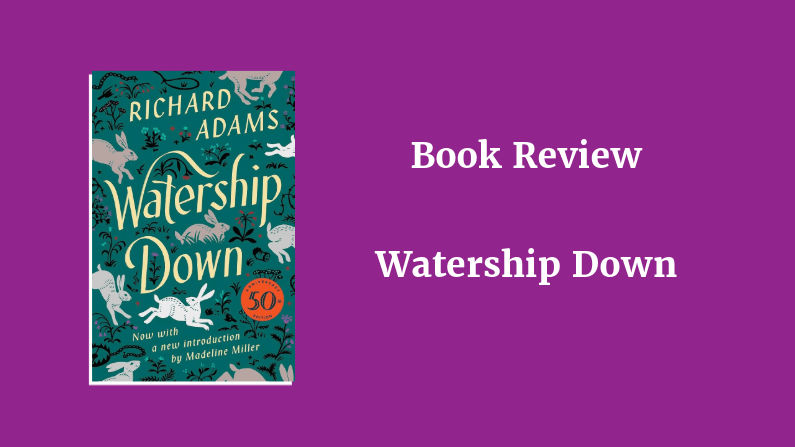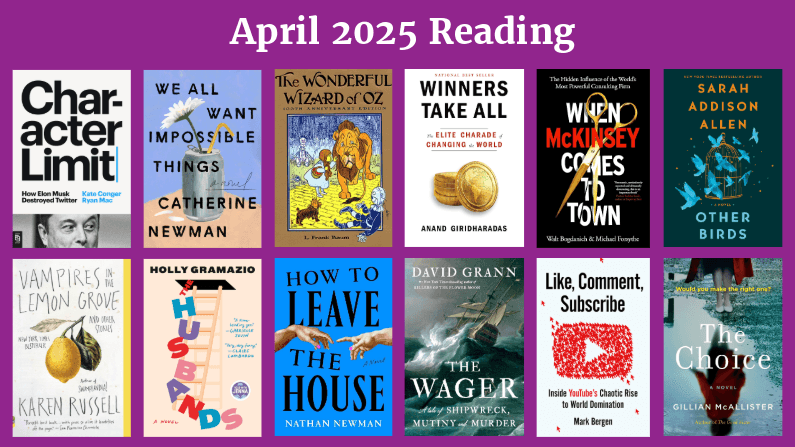This review of Watership Down by Richard Adams is actually for the the audiobook version narrated by Ralph Cosham that I listened to on Audible. I originally wrote this review in 2012, but I relistened to this book again in 2024 and found it just as magical and captivating.
Book Description
A small group of rabbits leave their warren in the English countryside when one of them (a small rabbit named Fiver who has the gift of prophecy) foresees bad things on the horizon. The book chronicles their adventures as they seek a place to build a new warren. Under the leadership of Hazel, the band of rabbits faces many obstacles—from how to cross a river to the lack of does to the penultimate battle with a warren run by the evil General Woundwart.
My Thoughts
I cannot believe I didn’t read this book until I was an adult! Originally published in 1972, Watership Down has been sitting out there my entire life, yet it took me until 2012 to read it. All I ever knew was that it was a book about rabbits. The simplistic book description is also deceiving. Yet it took only an hour of listening to realize that I was in the presence of greatness—a true 5-star read. Watership Down was an incredibly satisfying, rich, and magical reading experience—the kind of book that transcends age and time. In my opinion, it deserves a place on the list of best books of all time, and it has earned a spot on my list of all-time favorite books.
What makes the book so satisfying is that it works on multiple levels. Adams strikes the perfect balance between reality and magic. Not only will the book satisfy children looking for a gripping adventure tale and rabbit folklore (the book grew out of a series of stories that Adams told his daughters), it will also satisfy an adult reader, with the rich personalities of the rabbits (we all have a Big Wig in our lives, I’m sure) and how well the rabbits’ lives translate into our human lives. Although Adams talks in the introduction about how the book is not an allegory, it is not difficult to see the differences between the leadership approaches of Hazel and General Woundwart.
Perhaps the best choice that Adams made is that, although these are talking rabbits, he makes them grounded in reality. In the introduction, Adams talks about how he never has his rabbits do anything that a real rabbit wouldn’t do. These are not rabbits who build little houses and wear clothes like Peter Cottontail. They are wild and natural rabbits and they live as such. When faced with an obstacle such as how to cross a river, they come up with a solution that felt realistic, plausible, and yet seemed like a huge leap of logic for a rabbit, which is why Blackberry (the “smart one”) had to come up with it.
Adams even gives the rabbits their own language (Lapine), which I found myself easily adopting. (Their word for tractor or car is hrududu, which, when pronounced by an awesome reader like Ralph Cosham, sounds just like a vehicle engine as interpreted by an animal.) It became commonplace to hear words like silflay (going aboveground to feed) and know exactly what they meant.
Another wondrous touch was the rich folklore and mythology that Adams created for the rabbits. One of the ways the rabbits keep their spirits up and adapt to their surroundings is by repeating the stories of El-Ahrairah, one of the first rabbits, whose exploits and trickery are woven throughout the book. I adored these stories about El-Ahrairah and enjoyed seeing how the rabbits would adapt the story to their present situation.
The other thing I loved about this book was that Adams doesn’t shy away from the harsh realities of life. The rabbits face real danger, including death and injury. Yet these moments are leavened by moments of triumph, peace, and sweetness. There were also moments of comic relief (the pidgin talk of the gull Keehar and Big Wig’s take on the world just tickled me). In addition, Adams writes one of the most beautiful and satisfying death scenes I’ve ever read in literature.
Nothing I can write can really capture how wondrous, satisfying, and pleasing this book was. If you’ve not read it yet, please get a copy (either in print or on audiobook) and read it as soon as possible. You don’t want to miss this book like I almost did. It is brilliant on so many levels, and I applaud Adams for creating such a wondrous work of literature that hits all the right notes.
About the Narration
Ralph Cosham was the narrator I listened to, and he was pitch-perfect. He captured the voices of each character perfectly—from Pipken’s timidity to Big Wig’s warm-hearted bluster. At 15+ hours, this was a relatively long listen but I never once tired of it and could not wait to immerse myself in this world over and over again. It was with a real sense of loss that I finished this book.
Have any thoughts about what you just read? Send me an email! I’d love to hear from you.







